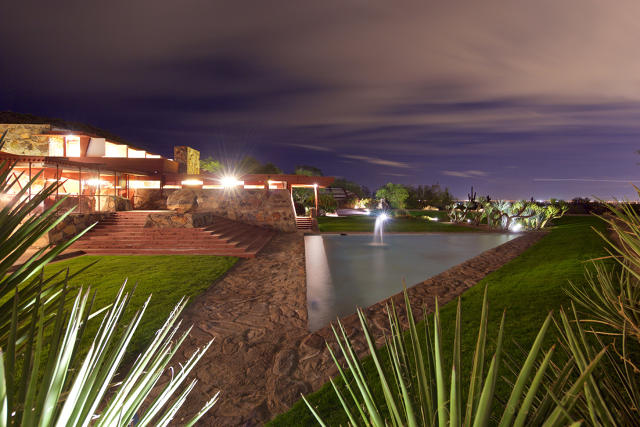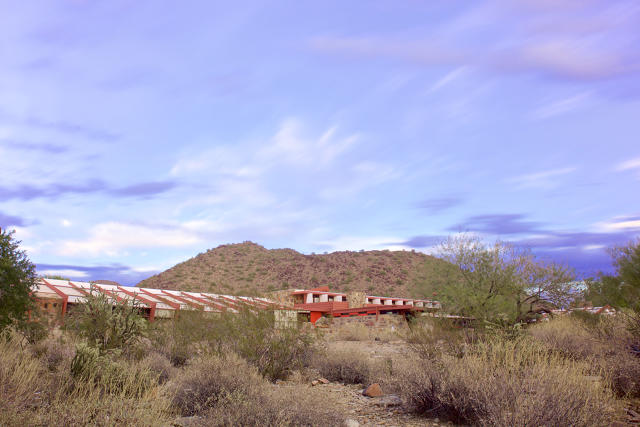Restoration Of A Frank Lloyd Wright Masterpiece Is An Exercise In Detective Work
For architect Gunny Harboe, preserving Taliesin West is about restoring Wright’s intent.
Frank Lloyd Wright’s living laboratory in the Arizona desert, Taliesin West is one of the most revered architectural projects of the 20th century. Nearly 80 years old and in continuous use since its construction in 1937, the complex is certainly showing its age. To restore the building to its former luster, the Frank Lloyd Wright Foundation hired Harboe Architects to forge a preservation strategy.
Taliesin West was Wright’s winter home and a school until he died in 1959. Today, it operates as an architecture school. It perfectly illustrates the philosophy that drove Wright to design buildings which commune with and connect to their landscape. The architect channeled the desert’s rugged characteristics in low-slung structures built from boulders, adobe, and redwood beams. Built on a 160-acre site, the campus includes studios, living quarters for apprentices, classrooms, Wright’s office, communal spaces, a bookstore, and gardens. Over 100,000 people visit Taliesin West annually.

Over the decades, Wright and his students constantly tinkered with the buildings and the adaptations didn’t stop after Wright passed away. Unsurprisingly, not every modification was documented (and not every modification was welcome). Moreover, portions of the campus are deteriorating, have water damage, and need new plumbing and electrical systems. Many of Wright’s most famous buildings haven’t held up well over time and notoriously required massive restoration efforts. Taliesin West is in good company. In 2001, Fallingwater required an $11.5 million overhaul. The Robie House is in the midst of an $11 million restoration. As of August 2015, only $11.5 million of the expected $25-million budget to restore the Unity Temple has been secured.
For Gunny Harboe, the architect in charge of the preservation master plan, the main challenge is revamping Taliesin West for generations to come, while keeping it a living, active place.
Harboe—a Wright expert who is in charge of restoring the architect’s Unity Temple, Robie House, and Emil Bach House—and his team established that 1939-1959 is Taliesin’s period of significance. This means that the preservationists will work to bring Taliesin back to how it appeared and functioned during Wright’s lifetime. The 760-page Preservation Master Plan identifies what needs to be preserved and why, cites the level of restoration needed for individual components of the buildings, and prioritizes future research.
“It’s how do you tell a story that’s clear without it being a mishmash?” Harboe says. “We don’t have all those decisions made, but we have a framework with the plan to help approach them.”

One of the most immediate projects is to create a physical mock-up of a proposed roof replacement. Wright originally installed a system of canvas panels to naturally regulate heat; eventually the roof was sealed when air conditioning was added. Harboe and his team will install modern fabrics with the hope of restoring the original quality of light that the canvas afforded.
“It’s, what are the heritage values that are there or are either compromised or even missing?” Harboe says about the overarching preservation plan and interventions. “How do we get back to creating a place that embodies those values so that people really understand what Taliesin is all about? The chief goal is to have a really rewarding experience and to experience what was in Wright’s mind.”
Next up for Harboe and his team? More detailed structure reports on the drafting studio and working to create a cultural landscape report. The Frank Lloyd Wright Foundation is currently raising funds to support the preservation efforts.
[All Photos: Andrew Pielage/© Frank Lloyd Wright Foundation]
Fast Company , Read Full Story
(38)














